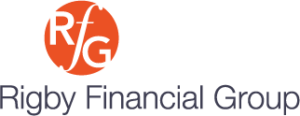The Paycheck Protection Program Could Help Your Business Now

On March 26, 2020, President Trump signed into law the Coronavirus Aid, Relief, and Economic Security (CARES) Act, the largest economic stimulus package in this country’s history.
One of the provisions of the CARES Act is the Paycheck Protection Program (PPP), which authorizes up to $349 billion in forgivable loans to small businesses – those with 500 or fewer employees (there are a few exceptions), independent contractors, and the self-employed. These businesses can now request loans for 2.5x their average monthly payroll, as calculated over the calendar year 2019. An applicant must certify in good faith that the uncertain economic conditions caused by COVID-19 make the loan a necessity.
For small businesses and sole proprietorships, the loan application window opened on Friday, April 3; independent contractors and the self-employed may apply beginning this Friday, April 10.
The loans will have a maturity period of two years, with interest fixed at 1.0%. As a bonus, any amounts spent on certain specific expenses during the first 8 weeks after the loan is made may be eligible for forgiveness; amounts which are forgiven are also excludable from taxable income for 2020.
Eligible for forgiveness:
• Payroll costs – including salaries & wages (up to a cap of $100,000 per employee), paid leave, and state and local taxes,
• Rent, so long as the lease was in force before February 15, 2020,
• Utilities, if service began before February 15, 2020, and
• Interest on mortgages in force before February 15, 2020.
But, to qualify for forgiveness of these expenses, certain conditions must be met – for example, the business must maintain the same number of employees for those first 8 weeks after the loan has been granted as it had either between February 15, 2019 and June 30, 2019, or between January 1, 2020, and February 15, 2020, though an employer may restore jobs terminated between February 15, 2020 and April 26, 2020. And compensation for those employees earning less than $100,000 annually may not be reduced by more than 25%, on penalty of a reduction in forgiveness eligibility.
While $349 billion sounds like a lot of money (and, indeed, it is a lot of money), this is a first-come, first-served situation, and those of you considering whether to apply should decide as soon as possible.
Of note, anecdotally only, we have seen the following with respect to different lenders:
Chase Bank is asking that applicants sign up online, after which a bank representative will call to walk them through the Chase PPP portal process.
Capital One is still in the process of putting their PPP portal together, and do not have online application capacity as yet.
First Bank and Trust asks that those applicants who have business relationship with the bank submit their PPP application, supplemental PPP application, and supporting calculations for the potential loan to their banker, and the bank will submit the application.
Hancock Whitney takes the same approach as First Bank and Trust.
A loan under the PPP may or may not be the best fit for you – the receipt of such loans may impact other potential benefits of the CARES Act.
If you have questions on the PPP and whether it might benefit your business, please click here to email me directly – I am here to help.
Until next Wednesday –
Peace,
Eric
